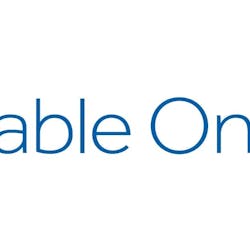MaxLinear's (NYSE:MXL) MoCA 2.5 networking ICs have been selected by French-based Teamly Digital for its new FiberCableStream cable micronode, designed to deliver multi-gigabit broadband services utilizing the existing HFC plant while co-existing with legacy cable, satellite and terrestrial networks on the same coaxial cable.
FiberCableStream combines a passive fiber-optic architecture serving as the transition point from the passive optical network (PON) to the "last meter" coaxial network. Up to eight MxL371x MoCA 2.5 networking ICs are integrated into a FiberCableStream and serve individual client devices or coax network units (CNUs) that leverage MaxLinear MxL371x networking ICs to deliver multi-gigabit speed services to the individual subscriber.
The FiberCableStream micronode is designed to allow cable operators to leverage current DOCSIS technology while offering competitive high-speed data services as they transition to DOCSIS Full Duplex technology.
FiberCableStream is designed to comply with DOCSIS provisioning. Fiber deep termination is intended to eliminate ingress funneling, laser clipping, CTB, CSO, CPD, micro reflections and upstream RF network impairments. FiberCableStream is based on PON, MoCA 2.5, DOCSIS/CCAP and RF overlay.
"Cable operators will benefit from a cost competitive, flexible and operationally transparent gigabit broadband delivery system that can be deployed quickly over existing networks without any impact to legacy DOCSIS and QAM video services. Our implementation can be provisioned as a standard DOCSIS device and enables scalable, selective network upgrades," said Olivier Papy, general manager and CTO of Teamly Digital.
Vincent Pirson, senior vice president of new access technology at Teamly Digital, said: "MaxLinear's MoCA 2.5 technology is key to solving a crucial part of the challenge, which is getting gigabit bandwidth from the existing coax infrastructure."





